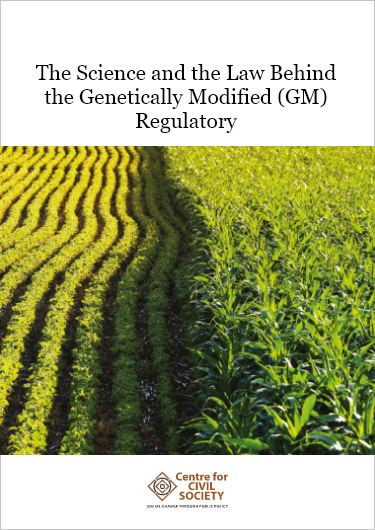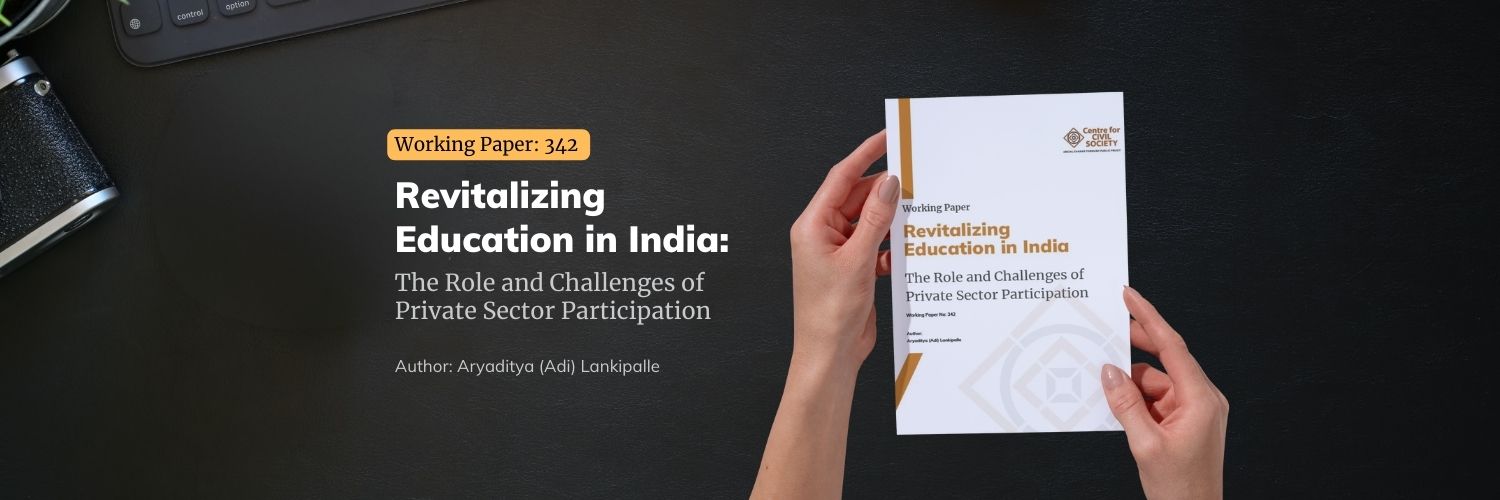Abstract: Bt Cotton is the only GM crop that has been approved for commercial use in the country in the year 2002. Since then, all the other GM varieties have been entangled in a sea of bureaucratic scrutiny. The core discussion of this article is Aruna Rodrigues and Others v. Union of India and Others where the petitioner pushed for a complete ban on introducing GM in India, without raising their complaints to the appellate authority for GM-related issues. Why the Supreme Court entertained this petition is not clear till date, but in 2012, a Technical Expert Committee appointed by the Court for this matter called for a 10-year moratorium on field trials for GM crops in its interim report. It was only in late 2021 that field trials for two varieties of Bt Brinjal were permitted again.
In this piece, we flesh out and critically analyse the arguments laid out in Aruna Rodrigues and Others v. Union of India and Others. Given the recent protest in Ahmednagar by farmers against the restrictions on GM crops and the government’s push for chemical-free natural farming, this piece holds value in understanding how the regulatory approvals of GM are held up in the Court and for what reason.
Introduction:
The cultivation of genetically modified (GM) crops and the regulatory mechanism governing its approvals has been a subject of extensive debate and litigation in India. Environmental and agricultural activists have often challenged the field trials and approvals of GM crops through various Public Interest Litigations (PIL).
At the heart of the legal discussion surrounding GM crops has been the Aruna Rodrigues and Others v. Union of India and Others 2011 case, which has been pivotal in unraveling the roots of anti-GM thought. Rodrigues challenged the release of GM crops before the Supreme Court in 2006. Since Rodrigues broadly contended that the Genetic Engineering Appraisal Committee (GEAC) did not lay out proper guidelines and questioned its independence in granting approvals, the case did not fall under the jurisdiction of the National Green Tribunal (NGT), the appellate authority for challenging GEAC’s approvals. For instance, in the case of Dr. K. Thiruthanikachalam v. Union of India and Others 2010, the petitioner had approached the High Court against the GEAC’s approval of Bt Brinjal but was redirected to NGT, the appellate authority. The court observed that any decision regarding the appeal against GEAC’s approvals first lies with the appellate authority, in this case, the NGT.
Rodrigues argued that planting GM crops contaminated nearby fields and was harmful to public health. In response, to prevent health hazards in the absence of an appropriate regulatory framework, the Supreme Court directed GEAC, the apex body for GM regulation, to withhold all GM approvals.
The preventative guidelines and its subsequent criticism:
On 8 May 2007, the Supreme Court laid out a series of guidelines for the GEAC to ensure that neighbouring fields were not contaminated due to GM crops field trials:
- There should be a distance of at least 200 meters between the trial fields and the neighbouring fields having the same type of cultivation;
- For all field trials, the name of the scientists who will be responsible for all aspects of the trials, along with their other details, should be reported to the GEAC and these trials should be regularly supervised
- Before bringing out the GM material from the greenhouse for conducting field trials, the approved institution should submit validated event specific test protocol at an Limit of Detection (LoD) of a minimum of 0.01% to confirm that no contamination has taken place.
But these guidelines laid down by the court have been met with sharp criticism. The distance of separation of 200 meters to prevent gene flow through pollination was criticized for being too high and born out of the assumption that there is rampant contamination between GM and non-GM crops, for which there is little evidence. The LoD was also deemed too low, especially relative to other international precedents such as EU – a precautionary regulator of GM crops – which permits imports with 0.9% GM material. Additionally, the protocols for testing such low LoD levels only exist in sophisticated laboratories, presenting practical difficulties (Rao and Annadana 2014).
The Supreme Court added that GM crops that were already commercially approved must not be further modified to create new species. Due to the commercial nature of these existing crops, the Court also mentioned that the GEAC must also account for their toxicity and potential to induce allergy in organic crops.
The contentious panel report of the Technical Expert Committee (TEC):
Despite the guidelines, in 2012, Aruna Rodrigues contested that the environmental release of GM crops due to improper scientific examination was threatening biosafety. She sought to stop all forms of GM release through imports, manufacture, and other means. The Supreme Court then appointed a six-member Technical Expert Committee (TEC) to look into the biosafety of GM crops, composed of experts on environmental safety, gene toxicology, food safety, nutritional sciences, plant biotechnology genetics and agricultural sciences.
On 7 October 2012, the TEC released an interim report calling for a 10-year long moratorium on GM crops given the flaws within the existing regulatory system. This report was challenged by the biotech industry, which alleged that it lacked focus and relied on scientific evidence from selected sources (PTI 2012).
The interim report was challenged by the Union Government on the count of missing representation from Plant Genetics and Agricultural Sciences. The Court then appointed Dr. R. S Paroda as the Agriculture Ministry’s nominee.
TEC’s final report called for an indefinite moratorium on the release of GM crops till the flaws in the regulatory system were addressed (TEC 2013). But Dr. Paroda had a dissenting opinion. He pushed for the continuation of GM field trials by emphasizing on the role of biotechnology in India’s agricultural development. Dr. Paroda’s report was backed by the National Academy of Agriculture Sciences (NAAS), an agricultural body of 500 renowned Indian agricultural scientists. The NAAS also condemned the final report of the TEC and alleged that the committee refused to have structured discussions regarding the objections raised by Dr. Paroda (Mukherjee 2013).
What does the science say?
Contrary to the claims laid by Rodrigues, empirical evidence elsewhere suggests that the cultivation of GM does not harm biodiversity or human health. Most scientific research studies conclude that GM food is safe for consumption (Norris 2015). Food regulators in major developed economies such as the USA and Canada have maintained that GM crops are safe for consumption (Health Canada 2020; FDA 2020), pointing out that they are no more riskier than their non-GM counterparts. The World Health Organization (WHO) also noted that GM foods currently in the market have passed safety assessments and that no adverse health effects have been observed in the countries where they have been approved (WHO 2014). A study done by the Japanese Ministry of Agriculture also found out that cultivation of GM rapeseed and soybean over a period of 15 years had no effect on surrounding biodiversity (MAFF 2021; Neo 2021).
Conclusion:
As of 2022, there have not been any other substantial decisions on the case. While the case has helped bring the GM debate into mainstream political discourse, it has only deepened division on the matter rather than arriving at an objective solution. The continuance of Rodrigue’s case in the Supreme Court remains a mystery since the GEAC was set up for this very purpose: to objectively assess complex scientific questions. The longevity of the case and the lack of progression evokes a key question: do the norms governing GM crops be laid out by the court – or is it a scientific duty that must be carried out by the GEAC?



